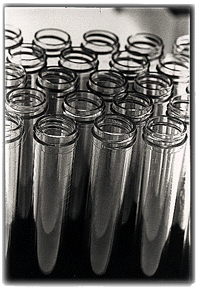Processing

Cocaine is the world's most powerful stimulant of natural origin. South American Indians have used cocaine as it occurs in the leaves of Erythroxylon coca for at least 5000 years. Coca-chewing promotes clarity of mind and a positive mood. Traditionally, the leaves have been chewed for social, mystical, medicinal and religious purposes. Coca has even been used to provide a measure of time and distance. Native travellers sometimes described a journey in terms of the number of mouthfuls of coca typically chewed in making the trip. This was a "cocada" - the time or distance and man could walk before a coca pellet was exhausted.Physical constraints ensure that even the most ardent coquero can get only a modest amount of cocaine into his bloodstream. Coca-induced heart-attacks and strokes are thus extremely rare among traditional users. In recent decades, however, there have been changes in cocaine's route of administration, patterns of usage, the technology of cocaine production, and typical dosages.
There are four basic routes to coca intoxication:
During crack-cocaine binges, addicts may become utterly drug-obsessed. The obsession is so all-consuming that food, money, sleep, loved ones, morality, any sense of responsibility, and even survival-instincts may be eclipsed. Users may smoke crack at fifteen-minute intervals for some 72 hours without pause for sleeping or eating. A "crash" inevitably follows; and a profound melancholy.
- chewing the leaves. Coca consumption was originally the prerogative of the Inca elite. Today, most of the natives indulge as well. Coca is also consumed as the highly esteemed mat� de coca. Drinking coca-tea tends to soothe the stomach; so it's good for digestive problems. Mat� de coca is less likely to induce jitteriness than coffee. It is also rather more effective as a mood-brightener.
- cocaine sulphate - pasta, basuco, basa, pitillo, paste. This is the low-grade stuff that reaches the urban slums of South America. The sulphate is the intermediate stage between the coca leaf and the finished cocaine hydrochloride crystal. Coca leaves are stripped from the plant. They are put into plastic pit with a solution of water and dilute sulphuric acid. A bare-footed man will climb into the pit; step on the mess; and shove it around with his hands. In South America, coca paste in commonly mixed with tocacco and smoked.
- cocaine hydrochloride - an odourless, white crystalline powder. It has a bitter, numbing taste. Cocaine hydrochloride is a stable, hydrophilic salt. Thus it can be snorted and absorbed through the nasal mucosa. Absorption at around 20-30% is still relatively poor. It is limited by the drug's tendency to cause vasoconstriction. Making cocaine hydrochloride is quite complicated. The pasta is first washed in kerosene. It is then chilled. The kerosene is removed. Gas crystals of crude cocaine are left at the bottom of the tank. Typically, the crystals are dissolved in methyl alcohol. They are then recrystallised and dissolved once more in sulphuric acid. Further washing, oxidation and separation procedures involve potassium permanganate, benzole, and sodium carbonate.
- freebase/crack cocaine. The idea of smoking cocaine isn't new. Drug company Parke, Davies introduced coca-cigars as long ago as 1886. But heat degrades rather than vaporises cocaine hydrochloride. So coca-cigar sales never took off. Smokeable cocaine in the form of the base rather than the salt didn't become widespread in the US for another hundred years. Freebase/crack is derived from cocaine hydrochloride which has been chemically treated with ammonia or baking-soda to free the potent base material from the salt. Free-base was originally produced by a dangerous four-or-five step process in which the hydrochloride salt was heated with water and a volatile liquid such as ether. Base cocaine in the form of 'crack' is safer to produce; but it is no less addictive. Crack/free-base itself is indissoluble in water, so it can't easily be injected or sniffed. Instead, it is usually smoked from pipes; burnt on a piece of tin foil; or mixed with tobacco and perhaps cannabis in a smokable joint. The euphoric rush comes within a few seconds - even faster than from intravenous cocaine hydrochloride. Initially, the user may experience a profound sense of power, mastery, cleverness and uninhibited desire. Orgasm is intensified. Extravagant hyper-sexuality and rampant promiscuity are common. The exhilaration usually starts to fade within a few minutes. Cocaine is rapidly metabolised in the blood and liver. Its typical half-life is 30-90 minutes. Soon, the crackhead desperately craves another hit. Profound depression may occur if it is denied. Descent into the abyss has begun.
Thus crack-cocaine is neither a wise nor effective choice of long-term mood-brightener.
[email protected]01 02 03 04 05 06 07 08 09 10 11 12
13 14 15 16 17 18 19 20 21 22 23 24Refs
HOME
HedWeb
cannabis-marijuana.com
Amphetamine
Future Opioids
BLTC Research
Amineptine.com
Cocaine Resources
Paradise-Engineering
Utopian Pharmacology
The Hedonistic Imperative
When is it best To take crack cocaine?
The Good Drug Guide
The Responsible Parent's Guide
To Healthy Mood Boosters For All The Family


